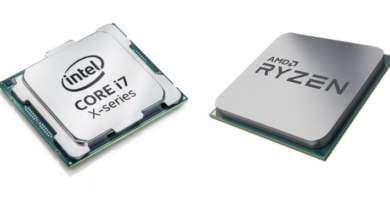How to choose the right cooling system for your computer

When building a computer, it’s easy to overlook cooling when you’re putting together the parts list.
There’s a shame because this is an important factor to take into consideration if you’re considering overclocking your CPU or purchasing a CPU with a reputation for running hot. Obviously, if you know what you want, the only thing you need to do is check independent review sites to figure out which cooler offers the best performance per dollar and meets your requirements.
They can be found in a variety of sizes and shapes, and they can be attached to a multitude of CPU sockets. Is RGB lighting important to you? Would you prefer quietness or do you desire the absolute best cooling you can find, no matter how noisy it is?
We need to know a few things before we begin:
- The cooler that Ryzen CPUs come with should be sufficient for stock speeds and overclocking. If you are building a Ryzen system, the cooler that it comes with will be enough. While you can still buy aftermarket cooling if you wish, the stock cooler may be sufficient for your purposes.
- Keep an eye on RAM height and clearances: Some air coolers or AIO water loops can encroach on RAM or some VRM heatsinks on certain motherboards. The CPU makers specify that other components are not allowed in the “no use zone,” but they sometimes do. Measure and verify clearance before you buy.
- When you use your car’s air conditioning, there is more noise as well as more cooling. When the fan is running low, you don’t even notice it. What about when it’s at maximum speed? In a way, that is the same thing that happens when you add more fans to your PC (for the most part). The problem can be mitigated somewhat by using larger fans that move more air at a reduced speed, or by investing in fans designed to be quieter.
- In order to make sure there is an option to turn off RGB lighting, make sure there is one. Unless you love being bathed in a thousand rainbow-colored suns, be sure there is an option to do so. It’s always a bad idea to find out that some of your hardware tries to cycle colors that aren’t compatible with the rest of your build. Who cares if you can turn the lighting off if you are using a case without a window.
Check your budget
When choosing a new CPU cooler, this is perhaps the most important decision you will have to make. Your CPU, PC case, and motherboard will largely dictate the size, power, and other specifications of the cooling system you choose, so the list of possible coolers is already narrowed down for you.
Do you have an entry-level build in mind? Most Ryzen CPUs come with an included cooler that can save you some money. You can get comparable temperatures with the most expensive air coolers, which are about $100, compared to more expensive all-in-one coolers. Depending on the model, AIO liquid coolers start at around $60 and can reach nearly $300.
Larger radiators usually cost more, as do additional features such as RGB lighting. While you are filling your PC with water, custom water cooling will drain your wallet. You’ll find that fittings, tubing, pumps, radiators, and reservoirs, as well as CPU and GPU blocks, will cost far more than an AIO. Those are just the parts.
Check your clearances
I am not referring to sales here, I am referring to physical dimensions. Look at all the things nearby the CPU socket. You might have trouble using the cooler you want because of each of those components. There are some issues with CPU sockets, though they are less of a concern nowadays as most coolers can be used on a wide range of sockets.
It’s true for mainstream parts, but if you’re building a HEDT system with Intel’s X-Core or AMD’s Threadripper, you’ll need to find a cooler that can accommodate your massive chip as well as cope with the extra heat production. As well as the specifications for the computer case you’ll be using, make sure you check them.
The manufacturer of the chassis should list the maximum height of the cooler, and the manufacturer of the cooler should list the height of its cooler. You’re good to go as long as the cooler does not exceed the maximum for the case. Make sure your RAM is compatible as well.
There are some larger coolers that will mention if they have an offset to accommodate larger RAM sticks. When it comes to water cooling, you don’t have to worry about clearance, although you do have to consider your case’s compatibility with radiators. The manufacturer of the case will usually list the maximum radiator size for each mounting position, so make sure to check for those specifications.
When it comes to water cooling, you need to make sure to take the clearance into consideration if you plan to mount it on top of the case. Depending on the radiator height and the thickness of the fans, the top of the motherboard, the 8-pin CPU power connector, and/or the RAM sockets may interfere with one another. The power connectors must be connected before installing your radiator and fans, even if there is enough room for the radiator.
Some final thoughts on cooling
A computer’s cooling considerations are determined by many factors, including its cost, function, and other components. We are not trying to make a supercar powered by a lawnmower, but rather a harmonious whole. You don’t have to overclock your CPU if you bought an Intel non-K or Ryzen chip you plan on running at stock speed, just match the CPU’s TDP with the cooler’s TDP. If you use a high-profile RAM stick, certain coolers might not be able to handle the space.



